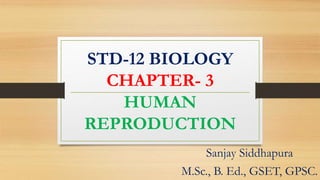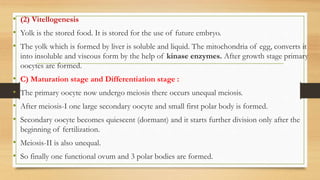This document provides an overview of human reproduction. It discusses:
1. The male and female reproductive systems, including the testes, ovaries, and other primary and secondary sex organs.
2. The processes of gametogenesis, or the formation of eggs and sperm, which takes place in the ovaries and testes.
3. Spermatogenesis, the process by which sperm are produced in the testes through spermatocytogenesis and spermiogenesis.
4. Puberty, the stage of sexual maturity when external sex characteristics appear in girls around ages 11-14 and boys around ages 14-16.





























































